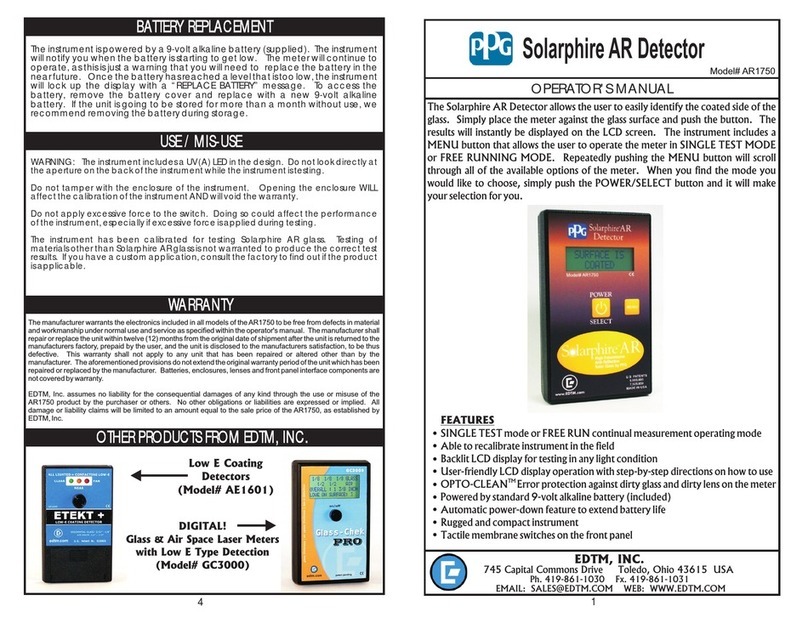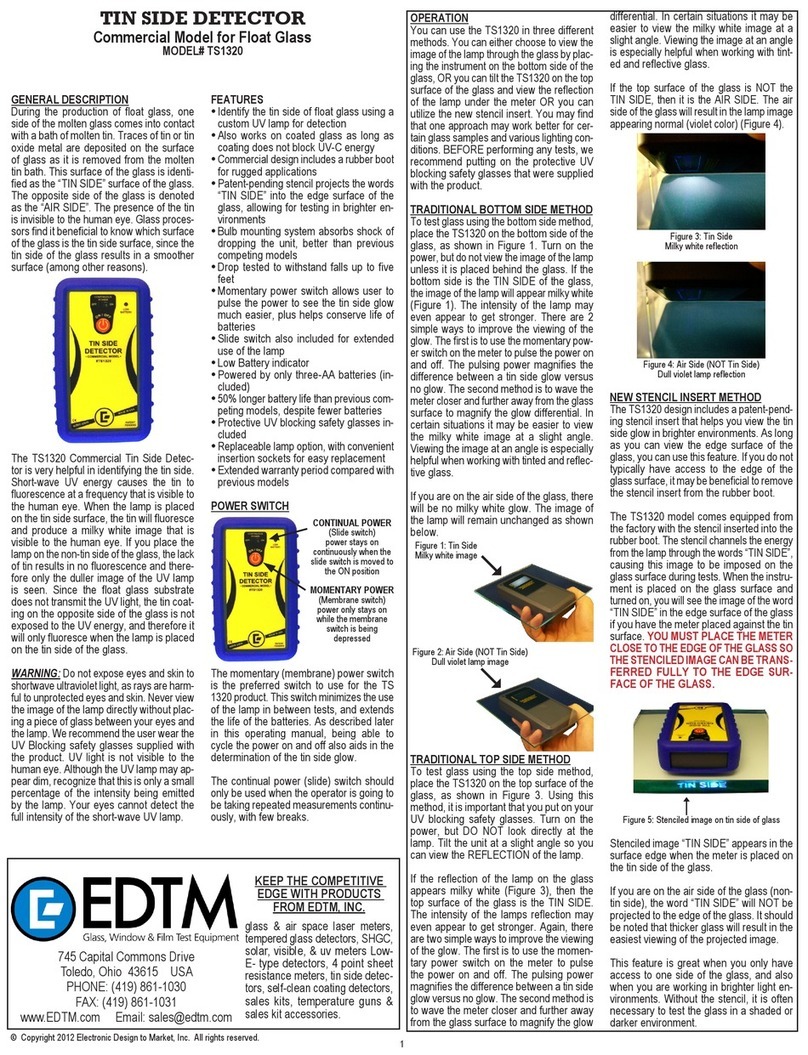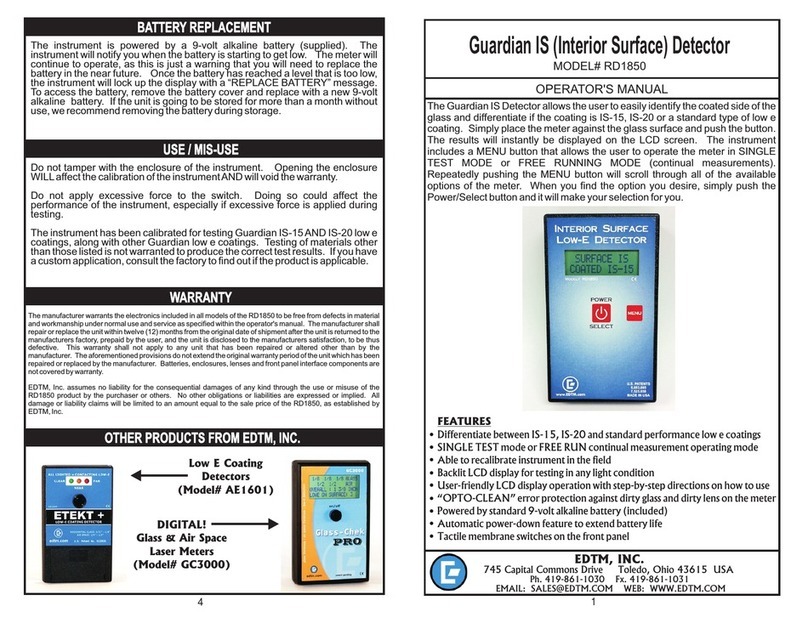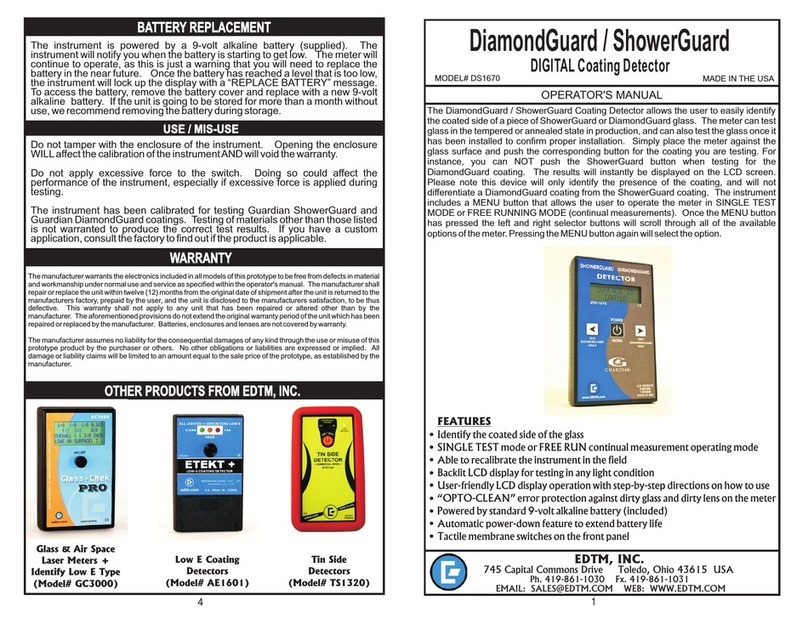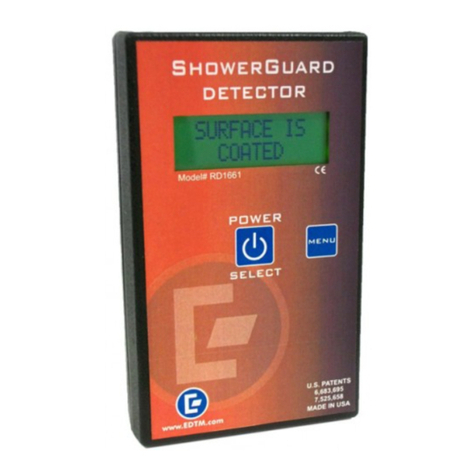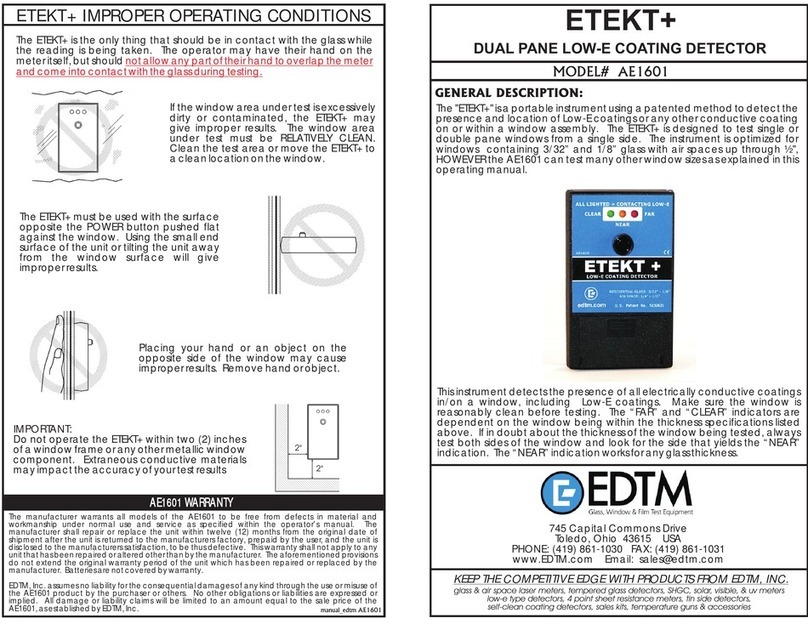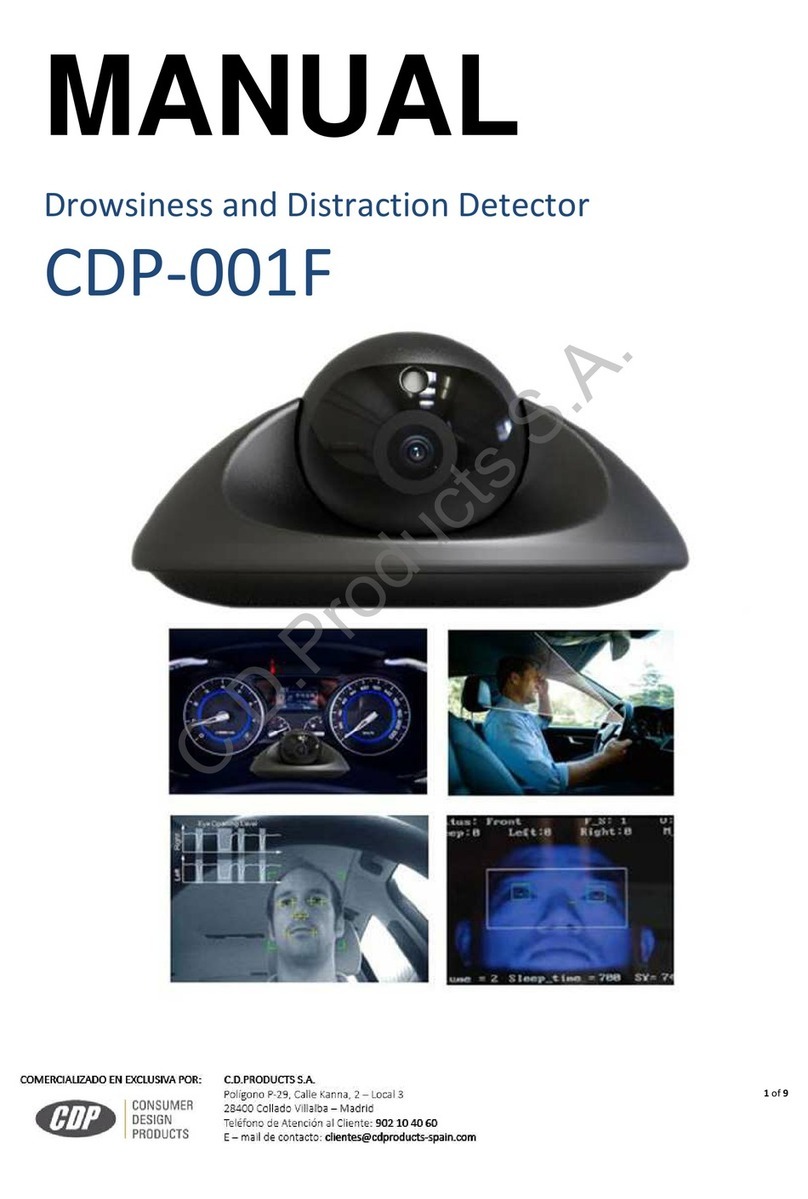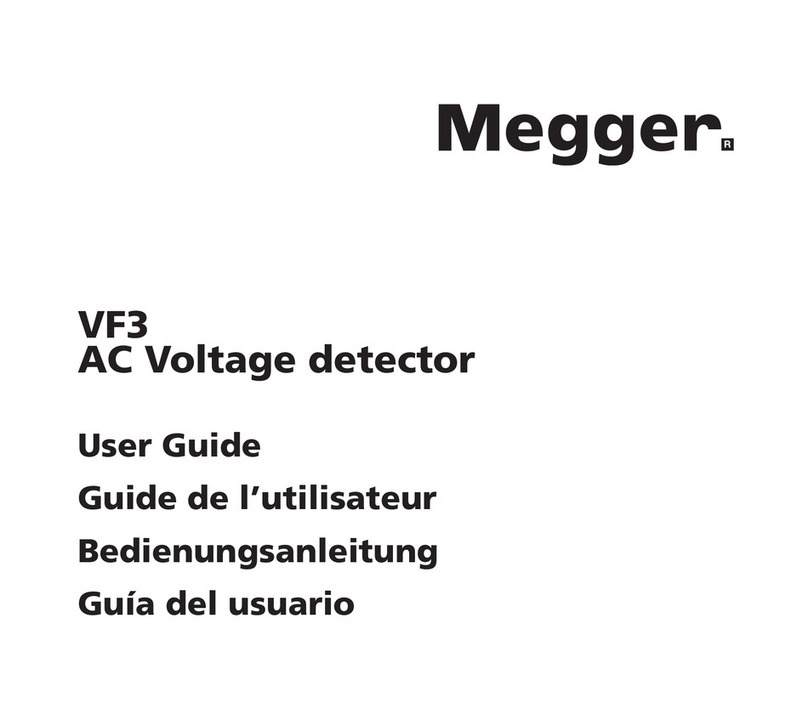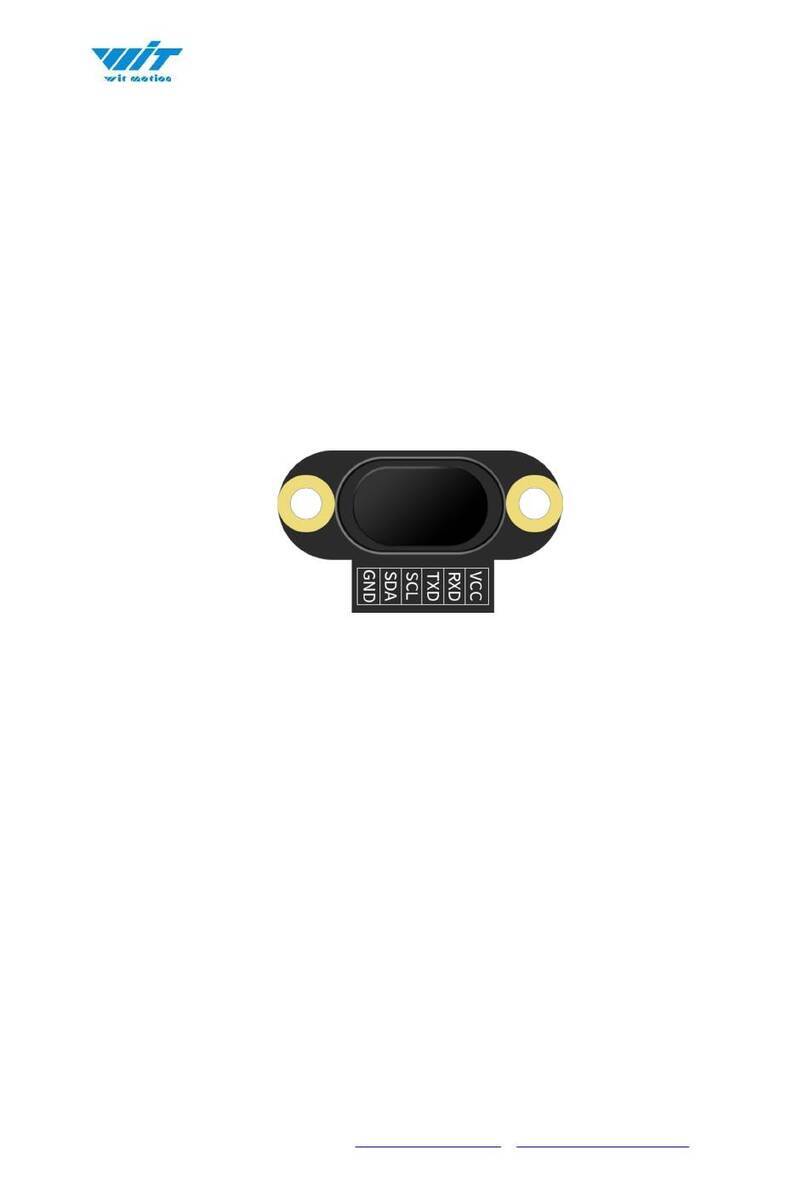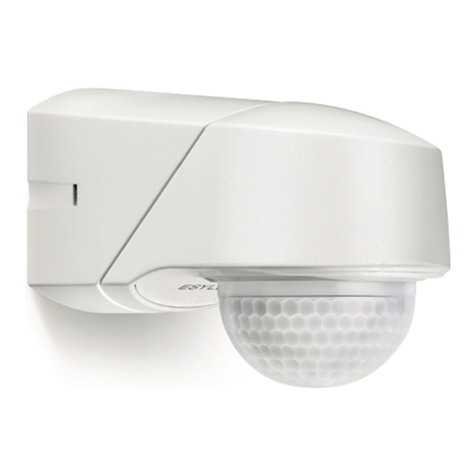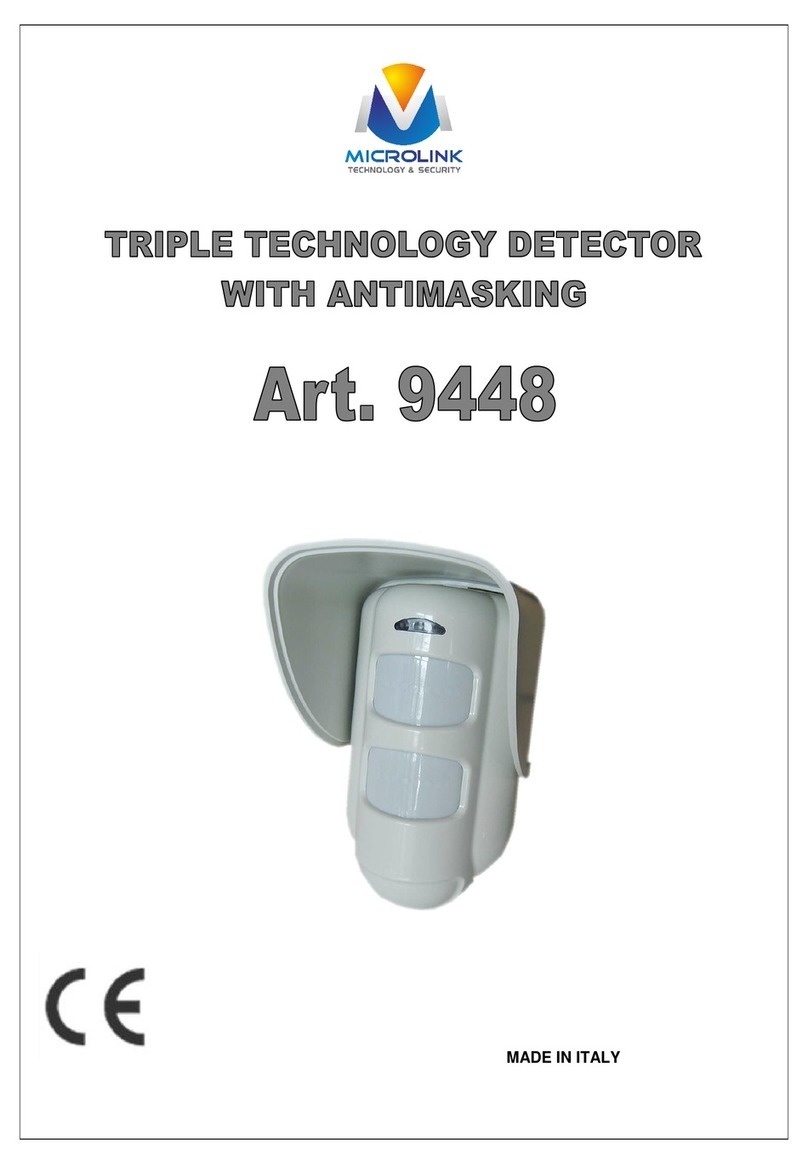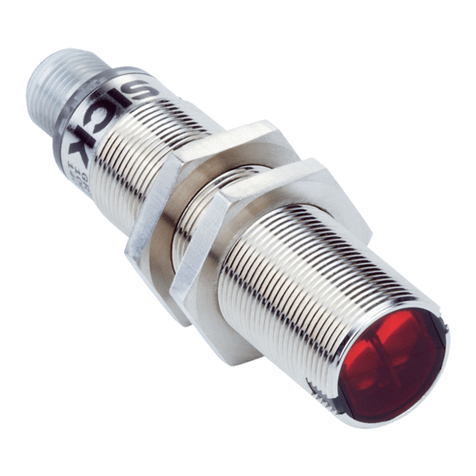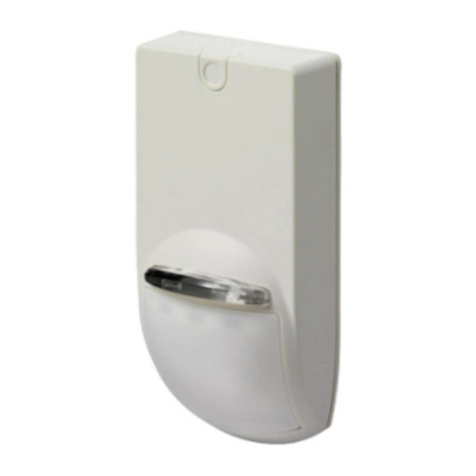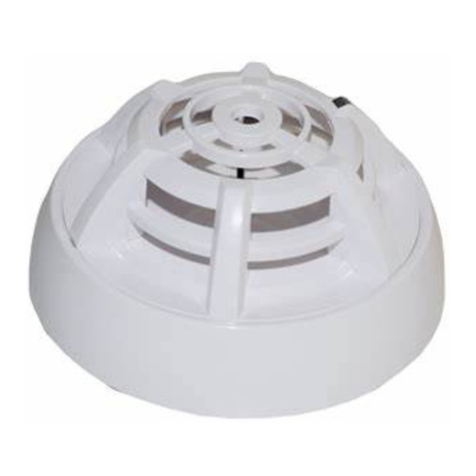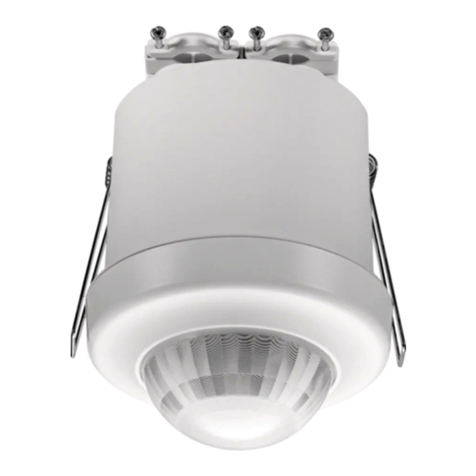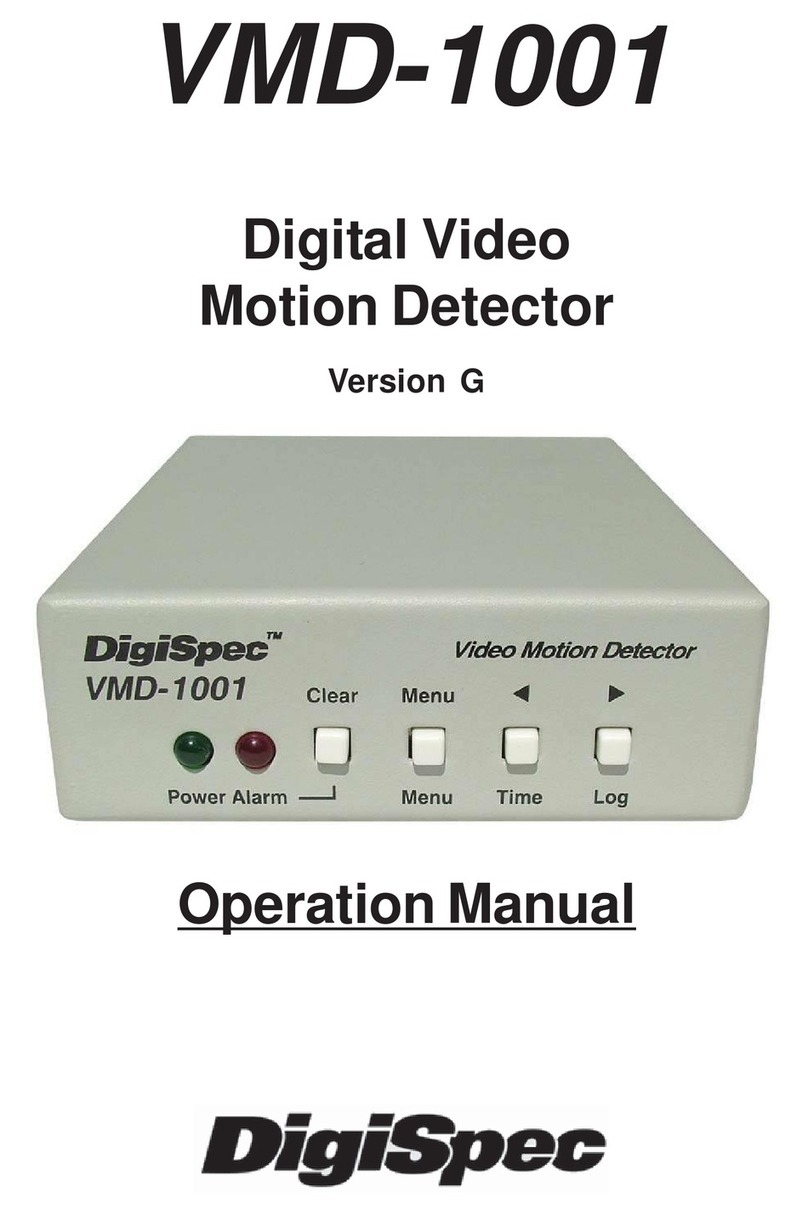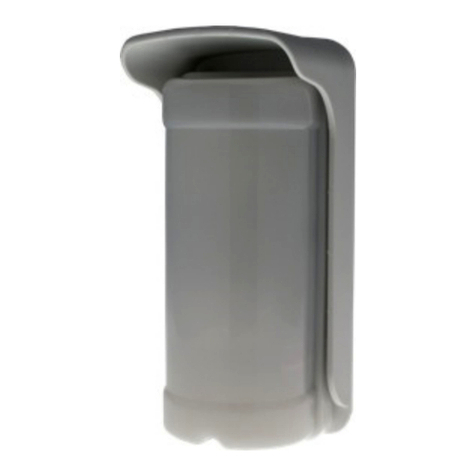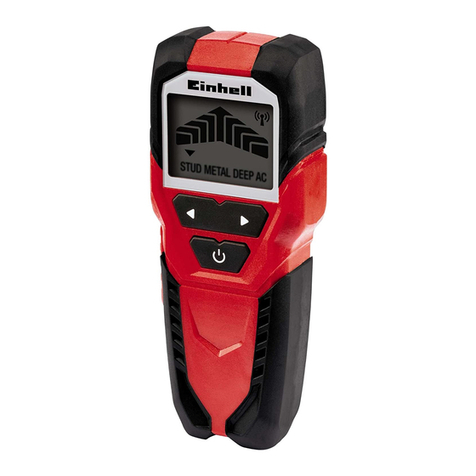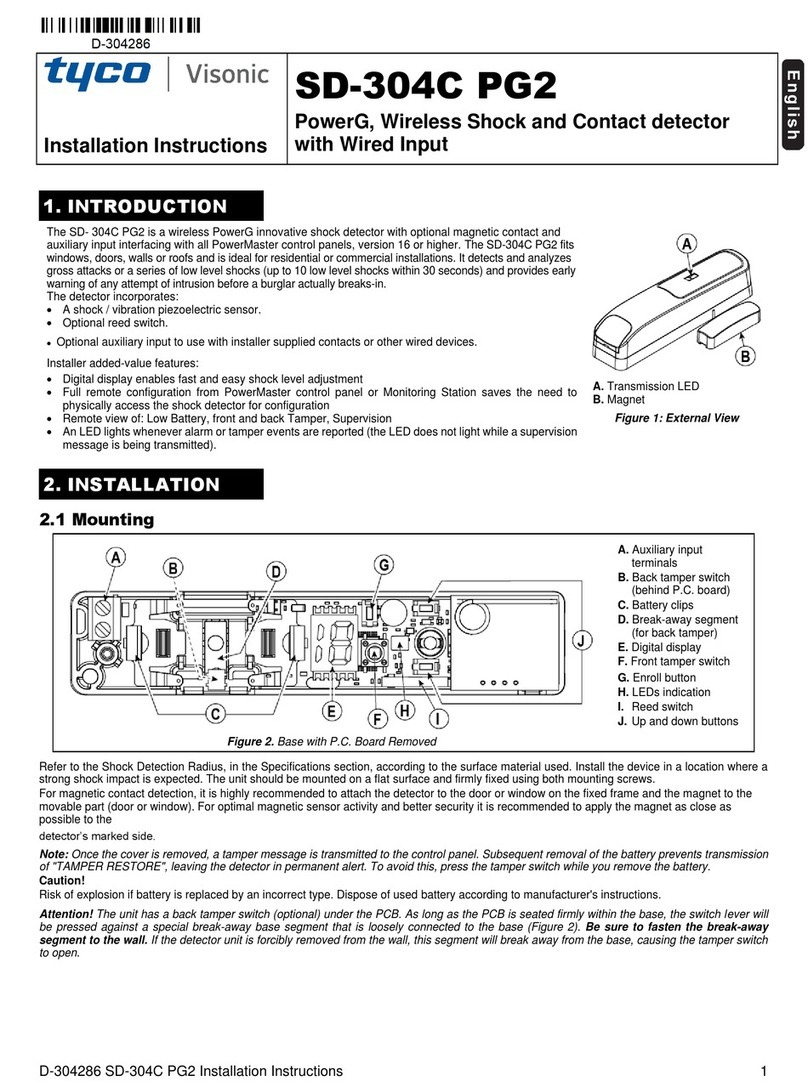EDTM Tin Side TS1420 User manual

During the production of float glass, one side of the molten glass comes
into contact with a bath of molten tin. Traces of tin or tin oxide metal are
deposited on the surface of glass as it is removed from the molten tin bath.
This surface of the glass is identified as the "TIN SIDE" surface of the
glass. The opposite side of the glass is denoted as the "AIR SIDE". The
presence of the tin is invisible to the human eye. Glass processors find it
beneficial to know which surface of the glass is the tin side surface, since
the tin side of the glass results in a smoother surface (among other
reasons).
The TS1420 Line-powered Tin Side Detector is very helpful in identifying
the tin side. Short-wave UV energy causes the tin to fluorescence at a
frequency that is visible to the human eye. When the lamp is placed on the
tin side surface, the tin will fluoresce and produce a milky white image that
is visible to the human eye. If you place the lamp on the non-tin side of the
glass, the lack of tin results in no fluorescence and therefore only the duller
image of the UV lamp is seen. Since the float glass substrate does not
transmit the UV light, the tin coating on the opposite side of the glass is not
exposed to the UV energy, and therefore it will only fluoresce when the
lamp is placed on the tin side of the glass.
WARNING: Do not expose eyes and skin to shortwave ultraviolet light, as
rays are harmful to unprotected eyes and skin. Never view the image of
the lamp directly without placing a piece of glass between your eyes and
the lamp. We recommend the user wear the UV Blocking safety glasses
supplied with the product. UV light is not visible to the human eye.
Although the UV lamp may appear dim, recognize that this is only a small
percentage of the intensity being emitted by the lamp. Your eyes cannot
detect the full intensity of the short-wave UV lamp.
OPERATOR'S MANUAL
Tin Side Detector
Line-powered with Automatic Glass Detection
MODEL# TS1420
1
MADE IN THE USA
6
The manufacturer warrants the electronics included in all models of the
TS1420 to be free from defects in material and workmanship under normal
use and service as specified within the operator's manual. The
manufacturer shall repair or replace the unit within twelve (12) months
from the original date of shipment after the unit is returned to the
manufacturers factory, prepaid by the user, and the unit is disclosed to the
manufacturers satisfaction, to be thus defective. This warranty shall not
apply to any unit that has been repaired or altered other than by the
manufacturer. The aforementioned provisions do not extend the original
warranty period of the unit which has been repaired or replaced by the
manufacturer. Lamps, rubber boots, and power supplies are not covered
by warranty.
The manufacturer assumes no liability for the consequential damages of
any kind through the use or misuse of the TS1420 product by the
purchaser or others. No other obligations or liabilities are expressed or
implied. All damage or liability claims will be limited to an amount equal to
the sale price of the TS1420, as established by the manufacturer.
Glass & Air Space
Laser Meters +
Identify Low E Type
(Model# GC3000)
RELATED PRODUCTS
Low E Coating
Detectors
(Model# AE1601) DIGITAL
Tin Side
Detectors
(Model# TS2300)
WARRANTY
Power Requirement
5 or 6 Vdc, 1.5 Amp power supply is required.
Reflex Programmable
Coating Detector
(Model# RX1550)
Portable Tin Side Detector
-Commercial Model-
(Model# TS1320)
5
LAMP REPLACEMENT
The TS1420 includes a custom short wave UV lamp inside the enclosure.
If the lamp stops working, confirm that the lamp is bad by cycling power. If
there is no glow at start up, it may be necessary for you to replace the short
wave UV lamp. The replacement lamp is PART# TS1310 and is available
from your dealer.
To replace the lamp, unplug the unit.
There are
dangerous high voltages present inside the enclosure, and the electronics
should never be touched when powered. Use a Phillips screwdriver to
remove the 4 screws of the enclosure. Please note, remove the rubber
boot to locate the 4 screws on the bottom of the meter. See Figure 7
below.
The body of the lamp is held in place by foam pieces, while the terminals
are inserted into sockets in the circuit board. Carefully pull the old lamp
out of the sockets. Pay special attention to the foam pieces as you may
have to peel them away from the bulb. Leave as much of the foam in place
as possible, as this helps provide shock absorption to the bulb during use.
See Figure 8 below.
The replacement lamp should never be handled with bare fingers. Please
use gloves when handling the replacement lamp. The replacement lamp
will be sent to you with the terminals crimped at the proper location. DO
NOT MAKE ANY ADJUSTMENTS TO THE TERMINALS, AS THEY ARE
EXTREMELY FRAGILE. Carefully press the lamp terminals into the
receptacles. Fully reassemble the unit before turning power on to check
the new lamp.
Remember, DO NOT stare at the lamp output directly. Either look at the
image through a piece of float glass, or put on your UV blocking safety
glasses (included).
WARNING: YOU MUST REMOVE
THE POWER BEFORE SERVICING THE INSTRUMENT.
Figure 7
Remove power
4 screws
Figure 9
Remove the old lamp and
replace with new KEEP THE COMPETITIVE EDGE WITH PRODUCTS FROM
745 Capital Commons Drive
Toledo, Ohio 43615 USA
PHONE: (419) 861-1030 FAX: (419) 861-1031
Figure 8
4 screws from enclosure

FEATURES
2
Identify the tin side of float glass using a custom
Works on coated glass as long as coating does not block UV-C energy
Commercial design includes a rubber boot for rugged applications
Bulb mounting system absorbs shock of dropping the unit better than
previous competing models
Intelligent sensor detects the presence of glass and turns on the lamp
automatically for hands-free operation
“Max-Bright” software keeps the bulb warm to maximize the glow
Lamp-on indicator warns users of UV light
Line-powered to eliminate battery usage
Protective UV blocking safety glasses included
Replaceable UV lamp with convenient insertion sockets for easy
installation
UV lamp for detection
OPERATION
Press the power button to turn on the instrument. The red power LED will
illuminate. When the power is initially turned on the LAMP-ON indicator and
the UV lamp will also turn on for a “warm-up” period of approximately 90
seconds. During warm-up, you may begin testing glass, but the glow might
not be as strong. After the warm-up the “Max-Bright” software will blink the
lamp once every minute for approximately 10 seconds in duration if no glass is
detected. This is done to keep the lamp warm and ready for measurements at
any time.
To test a piece of glass, simply place the glass on top of the entire sensor. The
glass sensor will automatically detect the glass and turn the lamp on for 90
seconds. The 90 seconds will allow you to complete your test and potentially
begin a second test of your next piece of glass. The 90 second count will be
reset if glass is removed and another piece is placed on the instrument. The
“Max-Bright” software also includes an energy saving feature. If the TS1420
is left idle for more than 30 minutes the unit will enter a standby mode denoted
by the blinking power indicator. When in this mode, the Max-Bright software
will not blink the lamp every minute. To exit the energy saving mode, either
remove the resting piece of glass from the sensor or place a new piece on it.
You can use the TS1420 in three different methods. You can either choose to
view the image of the lamp through the glass by placing the instrument on the
bottom side of the glass, OR you can tilt the TS1420 on the top surface of the
glass and view the reflection of the lamp under the meter. You can also view
the glow through the edge of the glass. You may find that one approach works
better for certain glass samples and various lighting conditions. BEFORE
performing any tests, we recommend putting on the protective UV blocking
safety glasses that were supplied with the product.
POWER SWITCH
POWER SWITCH
single push of the button gets your
testing under way
GLASS SENSOR
detects the presence of
glass and turns lamp on
TEST WINDOW
view the tin side glow here
LAMP-ON INDICATOR
illuminates every time
the lamps turn on
5-6 Vdc Power
POWER-ON INDICATOR
illuminates when instrument power
is turned on
RECOMMENDED METHOD
The TS1420 is designed to be used as a hands free test. The instrument
should be positioned on a flat surface with the label facing up. With the
meter powered on, glass is then placed on top of the meter, as shown in
Figure 1. If the bottom side is the TIN SIDE of the glass, the image of the
lamp will appear milky white (Figure 1). If you are on the air side of the
glass, there will be no milky white glow. The image of the lamp will remain
unchanged as shown in Figure 2.
3
OPERATION - continued
Figure 1: Tin Side
Figure 2: Air Side
(NOT Tin Side)
Milky white reflection
Dull violet lamp reflection
TOP-SIDE METHOD
Using this method, it is important that you put on your UV blocking safety
glasses. To test glass using the top-side method, power on the TS1420
and place on the top surface of the glass as shown in Figure 3. Tilt the unit
at a slight angle so you can view the REFLECTION of the lamp.
If the reflection of the lamp on the glass appears milky white (Figure 3),
than the surface touching the glass is the TIN SIDE. If the reflection result
in a dull violet lamp image
( Figure 4), then the surface touching the glass is the AIR SIDE.
Figure 3: Tin Side
Figure 4: Air Side
Milky white reflection
Dull violet lamp reflection
SIDE METHOD
As long as you can view the edge surface of the glass, you can use this
method. Look at the edge of the glass where the meter is placed. If the
resulting image in the edge of the glass appears milky white (Figure 5),
then the surface touching the glass is the TIN SIDE. If the there is no milky
white glow ( Figure 6), then the surface touching the glass is the AIR
SIDE. This feature is great when you only have access to one side of the
glass, and also when you are working in brighter light environments.
4
OPERATION - continued
Figure 5: Tin Side
Figure 6: Air Side
Milky white reflection
No reflection
If lamps will not turn on when the glass is over the meter. Check to make
sure the glass sensor area is clean.
If the instrument lamp does not turn on when meter is powered on,
replace the lamp as described in the lamp replacement section
To improve the viewing of the glow, it may be helpful to move the glass
and TS1420 closer and further apart from each other to magnify the
glow differential.
In certain situations it may be easier to view the milky white image at a
slight angle. Viewing the image at an angle is especially helpful when
working with tinted and reflective glass.
If working in a bright environment, it may help to shadow the area of
glass you are testing to better see the fluorescing glow
Mounting the meter flush with the work surface will protect the meter and
glass.
ADDITIONAL OPERATING TIPS
PART # DESCRIPTION
TS1310 ---- Replacement Lamp
TS1440 ---- Replacement Rubber Boot
TS1441 ---- Replacement Power Supply
REPLACEMENT PARTS
1.
2.
3.
4.
5.
6.
Other EDTM Security Sensor manuals
